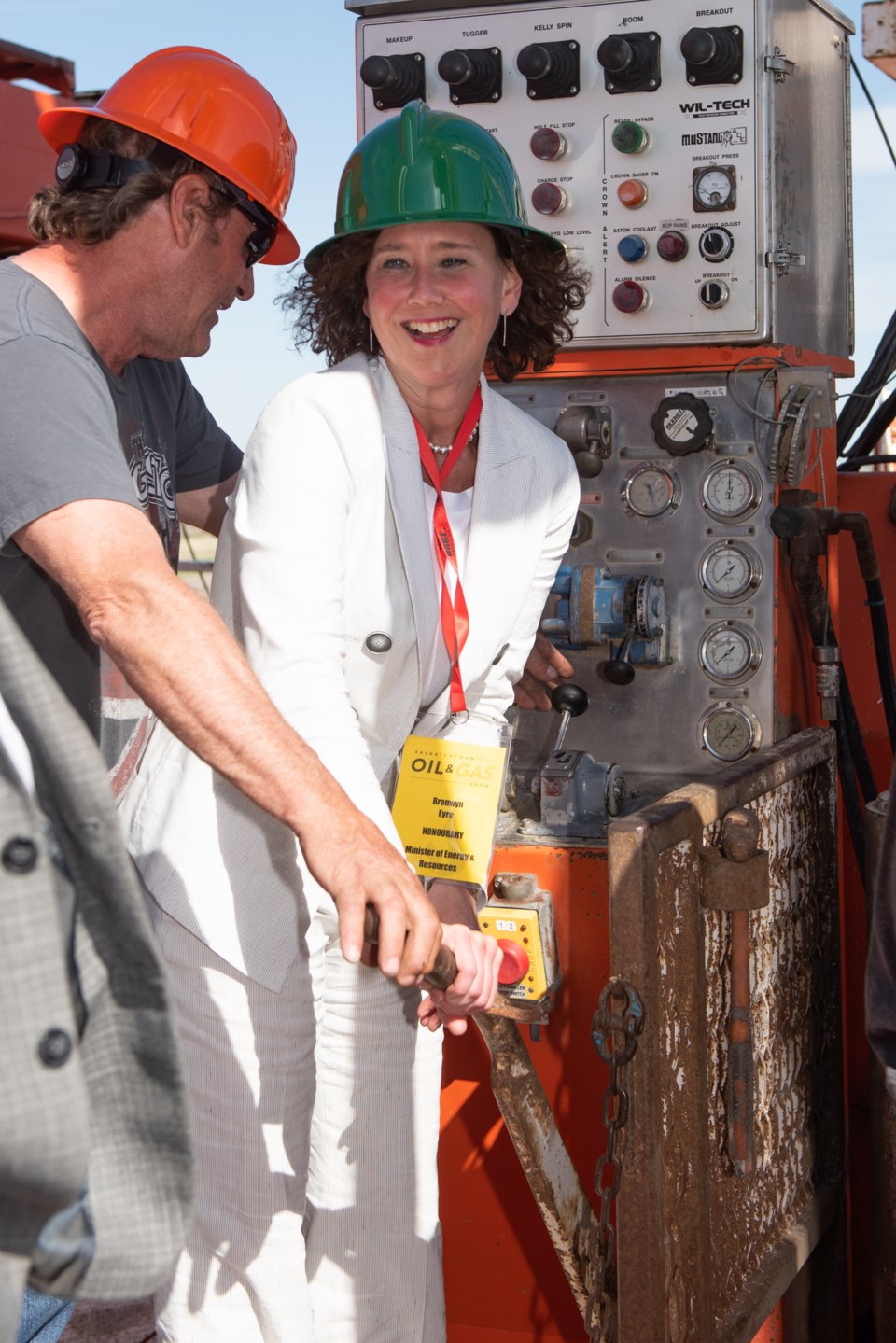Regina– Minister of Energy and Resources Bronwyn Eyre takes serious issue with a recent Fraser Institute report which says Saskatchewan is a high tax regime when it comes to oil and gas. The minister says the report is flawed and does not take substantial drilling incentives into account, but rather looks at the last dollar invested into old wells.
In last months’ Pipeline News story were entitled “Saskatchewan’s ever-increasing regulations are making this province uncompetitive: Hromek,” Jon Hromek of Adonai Resources II pointed out that a recent report from the Fraser Institute said Saskatchewan had the highest the marginal effective tax and royalty rate (METRR) on oil investments between Canadian provinces and American States, at 35.9 per cent.
, by Philip Bazel and Jack M. Mintz, was released in the spring of 2019.
The press release for the report, published on March 5, said, “Saskatchewan’s tax rate on new oil investments in 2018 was 35.9 per cent, well above the Canadian average of 22.7 per cent and the U.S. average of 28.6 per cent. In fact, Saskatchewan’s tax rate on new oil investments is more than 10 percentage points higher than Alberta’s, which last year was 21.3 per cent for oil sands investments.”
It said, “In response to recent tax changes in the U.S., which eroded Canada’s previous corporate and investment tax advantage over American states, the federal government last year introduced a series of temporary measures designed to incentivize new investment. But despite Ottawa’s tax changes, the study finds Saskatchewan still has the highest effective tax rate on new investments in both the conventional oil and natural gas sectors.
“The study’s calculations include everything from corporate income taxes to royalty payments to provincial sales taxes if they apply.”
Eyre had some significant concerns about this report, and its methodology. She said, “Our message is about the flawed methodology in the report, and it has to get out. This particular Fraser report is based on flawed theoretical methodology that does not reflect the reality on the ground.”
The report assumes the average well produces 50 bpd, at an average price of US$50 per barrel, a production level much higher that the reality in Saskatchewan.
She said the Scotiabank playbook, 2018, lists the top 20 oil plays in North America, and Saskatchewan has six in that top 20 list. “That’s what investors look at. Academics might not look at it, but investors do.
“The major problems with this report is that it focuses solely on the last incremental marginal investment into an existing oil or gas asset. Contrary to the report’s title, which is supposed to focus on all-new investment, this actually doesn’t. It just reflects the very small subsection of investment based on the last marginal dollar into an existing well or facility.
“So the methodology they used ignores the drilling of a new well, ignores the incentives received on that new drilling, and focuses instead on the last maintenance into an old well. So it totally ignores Saskatchewan’s royalty regime incentives. And over 95 per cent of newly drilled wells in Saskatchewan receive a royalty rate of 2.5 per cent for at least the first 38,000 barrels of production. So how can a report that’s supposed to be about new investment fail to consider that?” Eyre said.
“Mintz also takes the average production rate for Alberta oil and gas wells, he ignores our price production-sensitive royalty regime, he uses Alberta’s averages, and by doing that, he really overestimates our provincial royalty rate. The average Tier IV well in Saskatchewan produces 14.5 barrels per day. That creates a royalty rate of approximately 5.5 per cent, at a price of US$50 per barrel, whereas the report assumes Saskatchewan wells have a production rate of 50 barrels per day, and at US$50 per barrel, a royalty rate of approximately 23.5 per cent would be generated,” she explained.
“And that means the reports assumed resource surcharge is way overstated, because it’s calculated as 1.7 per cent of the value of production.”
She noted the report includes an analysis of Alberta’s oilsands royalty regime, but does not includes a similar analysis of Saskatchewan’s royalty regime for large scale thermal SAGD (steam assisted gravity drainage). “It’s as if the authors are completely unaware of the EOR (enhanced oil recovery) royalty regime,” she noted.
“They also rely on the marginal effective tax and royalty rate, this METRR, methodology. It tries to account for everything – corporate income taxes, sales taxes on capital purchases, capital taxes, transfer taxes, stamp duties, profit-based resource royalties and levies as a share of the pre-tax rate on investment. It just isn’t very well suited to the landscape here.”
Eyre said Mintz’s specialty is on harmonized sales tax, and that fits well under METRR analysis, but HST is a policy decision. It isn’t in place in Alberta and was abandoned in British Columbia. “What is he saying, that we should adopt HST?”
“That’s my rant.”
��




